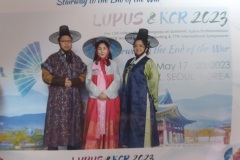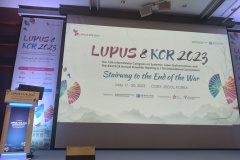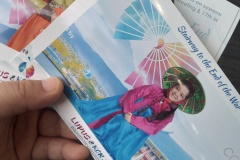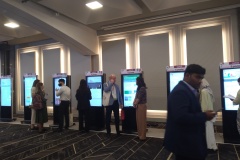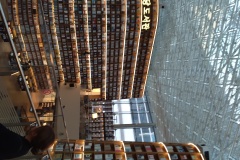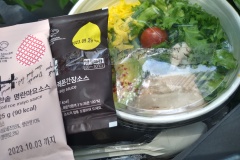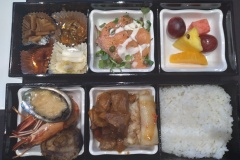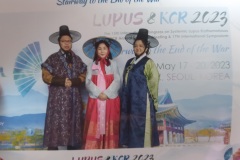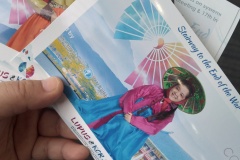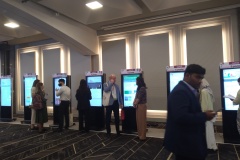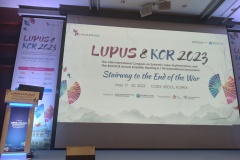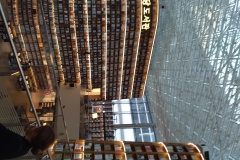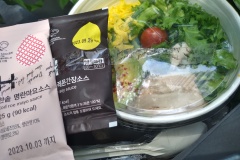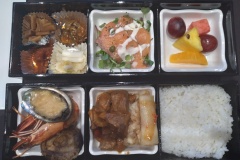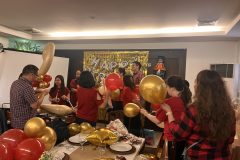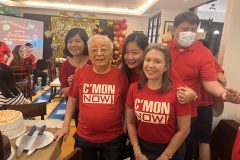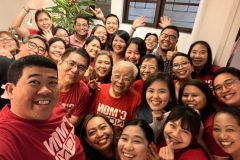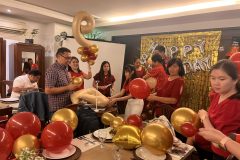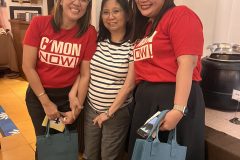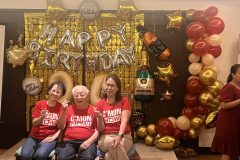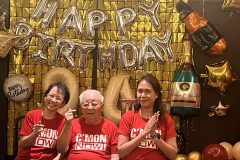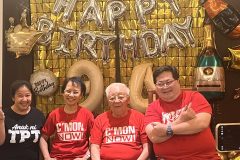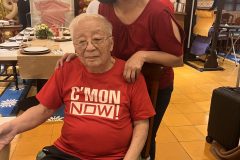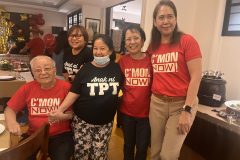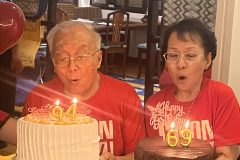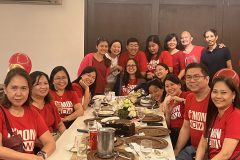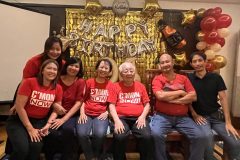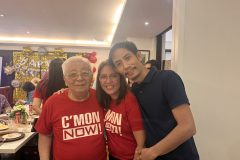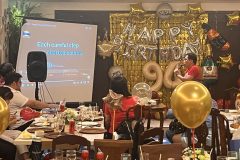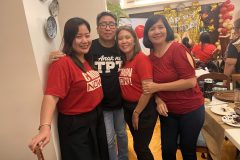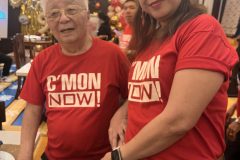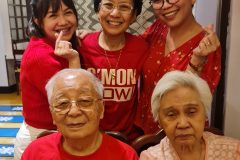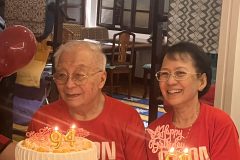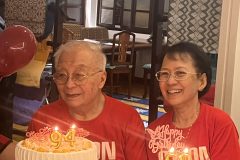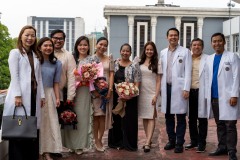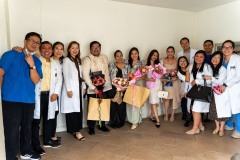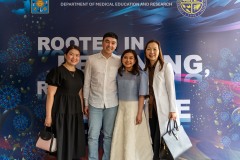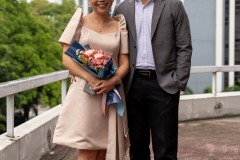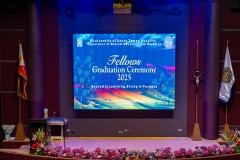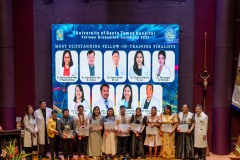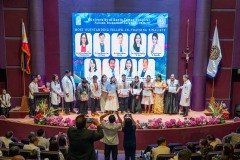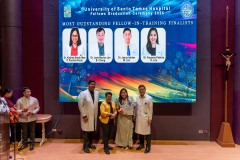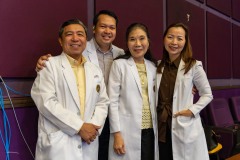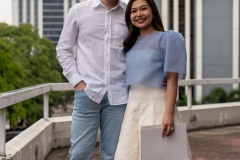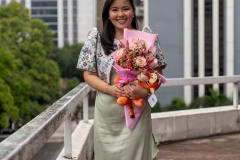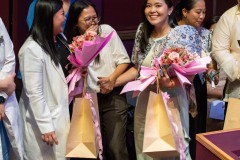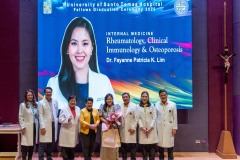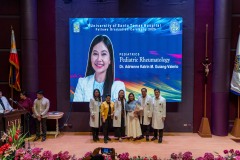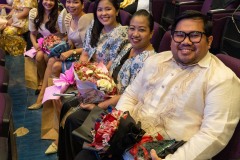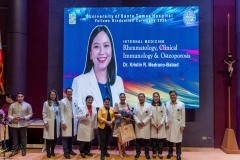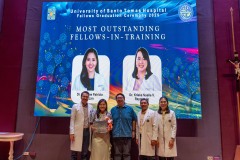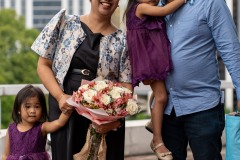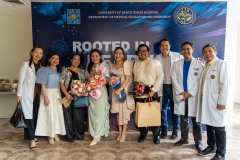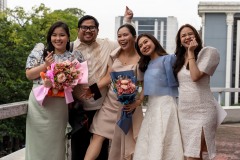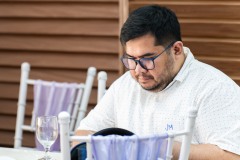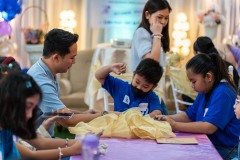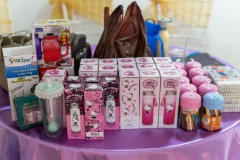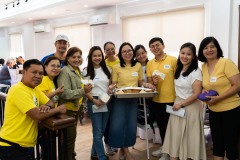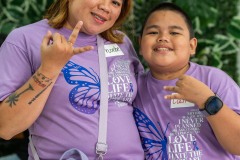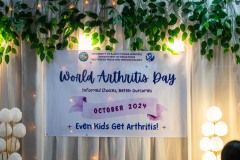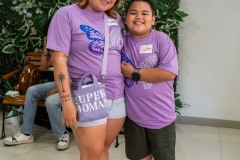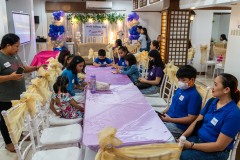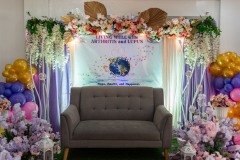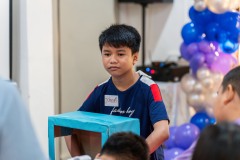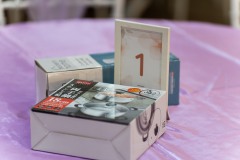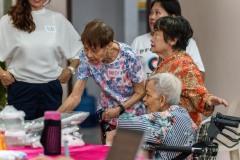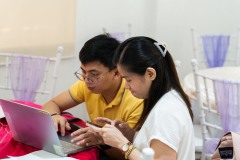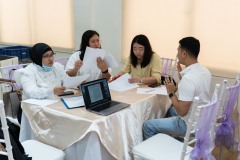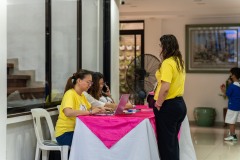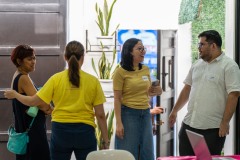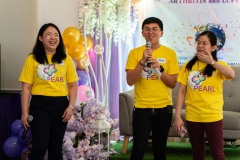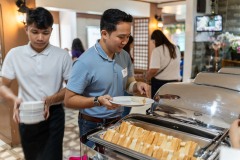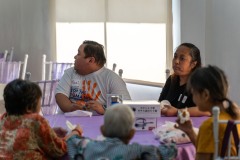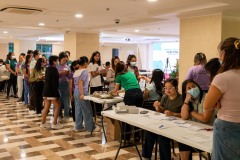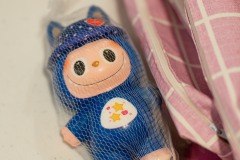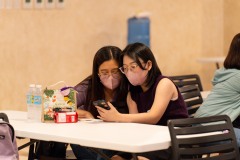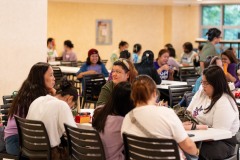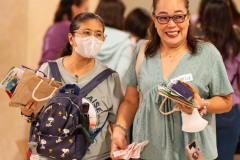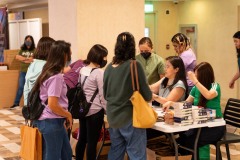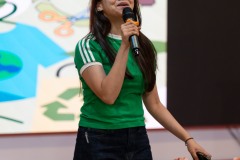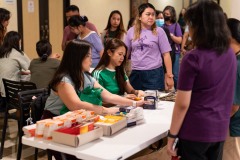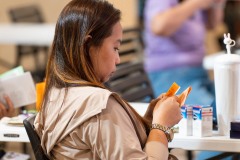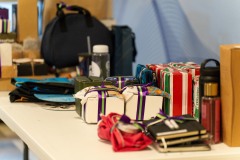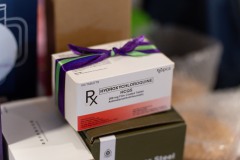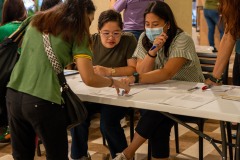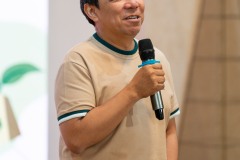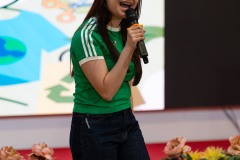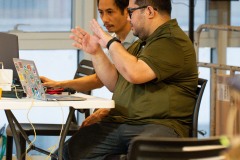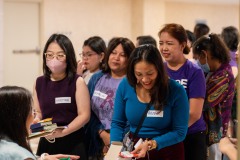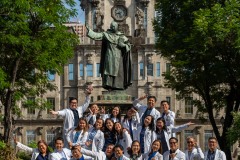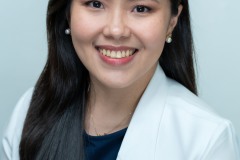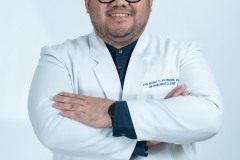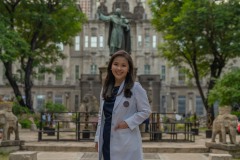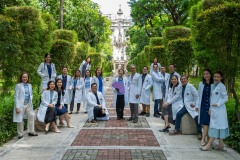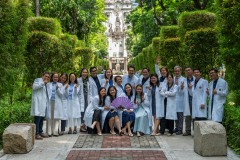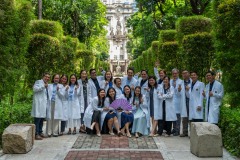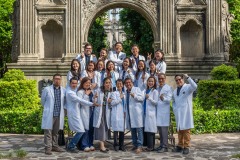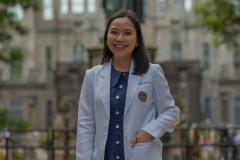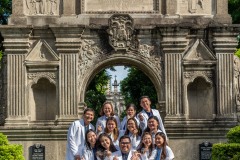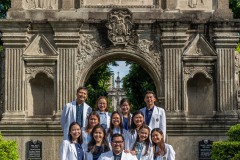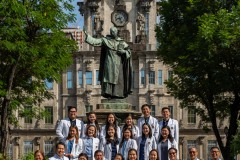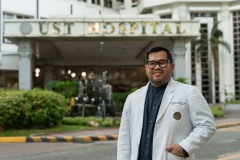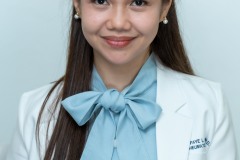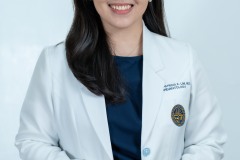




Click here
Click here

Click here
Click here







With every step of your journey, we care.
Our mission is to provide the highest standard of care for rheumatic disease patients, the public and the medical community through pursuit of excellence in EDUCATION and RESEARCH.
ROADs LESS TRAVELED…. Clinician as teacher and researcher
Prof. Sandra V. Navarra, MD*
University of Santo Tomas Faculty of Medicine & Surgery and UST Hospital
”Two roads diverged in a wood, I took the one less traveled by – and that has made all the difference”
(Robert Frost 1916)
I am humbled and grateful to be one of the first recipients of the Doña Victoria Ty Tan Professorial Chair in Medical Education. Doña Victoria, fondly called Amah….. carried a strong resemblance to my own mother who too had strength, vision and intelligence with a keen eye for business and whose father (my grandfather) also hailed from China. My heartfelt appreciation to the Metrobank Foundation, through UST Research and Endowment Foundation Inc, for this award, which I am honored to accept. A pleasant, inspiring morning to all!
As a clinician, let me share my personal journey and insights, by choosing roads less traveled – that of teaching and research.
The science and ART of medicine
Every patient is unique, and no disease illustrates this as pervasively as lupus. The challenge of this condition is that no 2 lupus patients are ever the same, and each patient may present with a variety of clinical issues over the course of illness some with devastating consequences. Hope for the butterflies shares real-life lupus stories which reverberate with hope and positivity, stories of people who ‘live well’ despite the struggles with this chronic illness. The inspiration for the book stems from a strong advocacy for taking charge of one’s life. Indeed, patient empowerment and patient-centeredness are key to improved outcomes and optimal well-being. For these patients, life can be fulfilling despite a debilitating condition. This is demonstrated in the various activities of Lupus Inspired Advocacy (LUISA) and People Empowerment for Arthritis and Lupus (PEARL), including the video production “We are all God’s children” during the papal visit and special art exhibit at the UST Hospital in partnership with UST Faculty of Medicine and Surgery.
The science of medicine teaches physicians to heal diseases and the human body, but the art of medicine entails much more to sustain the human spirit. Medicine is unique in that the finest technological advances will never replace the healing power of the human touch or the soothing words of comfort. The Thomasian physician stands out as the compassionate physician who treats the person and not the laboratory test. Voltaire (1694-1778) wrote “The art of medicine consists of
amusing the patient while nature cures the disease”, and Patch Adams reiterates “You treat the disease, you win or lose; you treat both the patient and the person, you always win no matter what the outcome”.
The clinician as teacher
Teaching is a beautiful job…. and a great responsibility. Pope Francis in his dialogue with young people, advised them to associate with ‘good teachers’ who can help them understand their dreams and help turn these dreams into reality.
The patient is the best teacher – figuratively and literally. The Patient Partners educational workshop in Rheumatology deploys, trains and certifies rheumatoid arthritis patients who are not doctors to teach physical examination of the joints. This unique program has been enthusiastically received by students since its integration into the medical curriculum more than a decade ago.
Experience is the best teacher, and mistakes the best lessons. To quote Metrobank founder Dr. George SK Ty “experience can be a very hard and strict teacher sometimes even cruel. But the lessons you learn from experience, you will never forget”. Similarly, there is no better way to teach medicine, compassion and effective communication skills than by the bedside, and by example. The best teachers are excellent role-models.
Medicine is tough and becoming a doctor is never easy. Each day in the clinics or wards presents the opportunity to hone interview skills, broaden differentials, and build basic techniques. Students and trainees must not shun or avoid difficult situations that may turn out to be your “baptism of fire”. We teachers are not here to coddle or pamper you, but rather to teach you RESILIENCE skills that allow you to deal with difficult situations in the reality of mistakes and errors.
To quote Steven Spielberg “The delicate balance of mentoring someone is not creating them in your own image, but giving them the opportunity to create themselves”. After all, “the greatest sign of success for a teacher is to be able to say “The students are now working as if I did not exist.” (Maria Montessori)
Then there are the challenges in teaching the millennial student, who some of us elders will berate as lazy, selfish and shallow – entrapped in a narcissistic sense of ENTITLEMENT characterized by a lack of appreciation for the sacrifices and efforts of others, lack of personal responsibility and inability to accept that actions carry consequences, typically expecting others to solve their problems even if the problems are of their own making.
We must understand though that “millennials’ perceived entitlement is merely an adaptation to a world of abundance” (Joel Stein). For example, the internet which some of us never had before, is now a basic essential for everyone – and has democratized opportunity for many young people, giving them access and information that once belonged mostly to the wealthy. Be wary however, that this instant information at our fingertips should not be at the expense of the irreplaceable personalized human interaction. As Pope Francis cautions, “We can be swayed by the voices of this world that compete for our attention. At first they seem appealing and exciting, but in the long run they will leave you only empty, weary, alone and disenchanted.”
On the other hand, teaching millennials can be fulfilling. As we are faced with the harsh reality of climate change and global warming with increasingly severe impacts of rising temperatures, more extreme weather, sea level rise and disruption to marine and land ecosystems, teachers can be gamechangers as we urge our students to make the increasingly critical decision of choosing between “Planet or plastic”. Since we initiated a weekly exercise among medical seniors to choose between planet or plastic, I am incessantly amazed and thrilled at the sheer energy and creativity with which they express themselves. This video produced by one group particularly stands out. [“Under the sea” production. Enjoy!]. That was produced by no other than MILLENIALS! Yes, even if these millennials may sometimes be a pain in the neck, they can be also be a joy. I am hopeful and confident it will be the millennials and gen Z who will ultimately save Mother Earth!
Finding a happy medium between veterans and rookies usually generates friction. On the other hand, experienced people of my generation, and the younger millennial and gen Z generation should realize and remember that we all ultimately want the same thing, including a better world for everyone.
The clinician as researcher
For a clinician, the word “research” can be intimidating. After all, we went to medical school in order to be good doctors, not good researchers. But realize that research pervades every aspect of clinical practice, as we make decisions on a variety of cases ranging from mundane to the complicated.
The basic foundation of research relied on simple descriptive reports. Do not underestimate the value of the humble clinical abstract or case protocol as these hold a rich repository of clinical data and several potential “research questions”. [Publish those grand rounds and case conference proceedings even just to hone in your literary skills.] Well written consultation or referral notes further enhances your credibility as a clinician, garner appreciation and admiration from your patients – by effectively
communicating, discussing, or endorsing a complex case with your peers.
And case series… Propelled by my mentor Prof. Tito Torralba, this was the first Philippine Journal of Internal Medicine (PJIM) issue dedicated to lupus, which shared the UST experience on a disease then thought to be rare – but now we know that lupus in reality presents with a broad spectrum of clinical features that mimics many diseases and can pervade almost the entirety of internal medicine. Importantly, this undertaking involved people, including physicians now in their own respective
specialty fields in Medicine [nephrologists Dr. Elizabeth Roasa and Dr. Libertad Rosales, neurologist Dr. Carmencita Gonzales, dermatologist Dr. Angel Cumagun].
Partnerships. Who would have imagined a physician immersed in clinical practice getting involved in basic molecular research? Perhaps it was all a matter of being in the right place at the right time – with the right people including scientists in the likes of UST biochem Prof. Gloria Bernas at Thomas Aquinas Research Complex, Prof Timothy Vyse of Imperial College in U.K., and current practicing orthopedist Dr. Charles Villamin a molecular biologist who was then a medical student scholar. Research outputs proceeded to become international publications, all in the field of lupus.
Clinical trials. As more and more biomedical research are being conducted, there is a greater decline in physician-scientists due to the evolving scientific and cultural chasm, and the rigors of conducting clinical trials. But clinical trials are crucial to developing better more effective drugs for our patients.
Collaboration is essential. Eventually, who you know may be just as important as what you know. Though this high impact Lancet publication purportedly led to the first lupus drug to be approved after a barren 50 years, more notable is my personal journey of how I got there – by meeting the key people who further enriched my international research dossier: Prof. Michael Weisman of Cedars Sinai who introduced me to US-based research scientist Dr. Lilia Pineda, who in turn introduced me to her boss Prof. William Freimuth, director of Human Genome Sciences which developed the belimumab molecule. [For the rheumatologists, just fresh off the press: BREAKING NEWS announcing positive phase 3 results on belimumab for lupus nephritis – providing renewed hope for our patients.]
Further opportunities followed through collaboration with colleagues in the international community. The Asia Pacific Lupus Collaboration (APLC) was formed to conduct collaborative multicenter studies in SLE from multiple countries including the Philippines led by UST Rheumatology – with 9 international publications to date and more in the pipeline – as well as strengthening research and educational collaboration with other global institutions including the Asia Pacific League of Associations for Rheumatology, Asian Lupus Nephritis Network and the prestigious Lupus Academy.
In the vicissitudes and many crossroads of life, all you may need is to Take a leap of faith! You’ll be surprised how serendipity – plus Divine Providence – accounts for much of the observations, decisions and outcomes in our individual lives. Finally, always take the time to say THANK YOU. To my patients, students, mentors, colleagues, staff, friends and family – who continue to teach me life lessons way beyond the classroom. To the University of Santo Tomas – as we move towards 500 years of unending grace, the Faculty of Medicine and Surgery and UST Hospital, who helped shape me into the person I am today. To the timeless legacy of Doña Victoria Ty Tan through the Metrobank Foundation for supporting the noble cause of education. To our heavenly Creator whose boundless love and mercy never ceases to sustain our unworthy souls. “Gratitude makes sense of our past, brings peace for today, and creates a vision for tomorrow.” (Melody Beattie)
It thus seems that by taking the roads less traveled, by teaching and doing research, I have come full circle to be a better doctor to my patients. With the countless blessings that have come my way, I am just as grateful for the countless opportunities to continue to “pay it forward”…
___________________________________
*Recipient, Dona Victoria Ty Tan Professorial Chair in Medical Education. Professorial chair lecture delivered on 19 December 2019, Buenaventura G. Paredes, OP Building, University of Santo Tomas, Manila, Philippines.
PHOTO & VIDEO GALLERY

Lupus Nephritis Forum
Highlighs of the Lupus Nephritis Forum in 2015.

Rheumatology Patient Partners Workshop
What happens when patients give back to fellow patients?

PEARL Musicale 2013
A musical presentation held in the BCI Auditorium in UST Hospital, October 2013.

Lupus in Clinical Practice
Held at the Diamond Hotel in Manila, on February 25, 2011, a seminar about Lupus aims to open awareness among doctors about Lupus, its effects, its impact and mitigation measures.

PEARL Musicale 2014
A follow up to last year’s musical presentation held this time in Glorietta on, March 2014.

I have Lupus, I am Beautiful
Held at UST Hospital in January of 2017, just because they have Lupus doesn't mean they have lost their sense of beauty. Humans are all flowers in their own right [...]
My Lupus, My Life
A gathering of Lupus Patients, as well as the book launching of “Hope for the Butterflies,” held at the St. Luke’s Medical Center in Quezon City.

PEARL Kids and Teens Edition
Held in St. Luke’s Medical Center, September 10, 2017, we gave hope to children and teenagers afflicted with Lupus, in a fun-filled event.

Video: My Lupus, My Life
A video during the My Lupus, My Life event in St. Luke’s Medical Center.

Video: PEARL Kids and Teens Edition
A collection of videos during the PEARL Kids and Teens Edition event in St. Luke’s Medical Center.

Audio-Visual Presentations
You’ll find here various videos we’ve used in our events and presentations. We hope they’ll inform you and raise awareness.

Precious Gem
Everyone is precious gems; to their parents, to the country, and to the world. We must nurture and take pride in them.

We are all God’s Children
No matter where we come from, our faith and our race, all of us, we are all God’s children.







Signs of the Times: FACTS and FAQs
In response to recent “earth & health-shaking” events, UST and SLMC Rheumatology through RETFI themed the PEARL-LUISA Forum last 09 Feb 2020 as “Signs of the times” focusing on 3 areas: “Bracing for more extreme weather”, “Un-masking nCOV”, and “Be prepared for the Big One”.
Greta Thunberg’s speech at UK climate strike
Teenage climate activist Greta Thunberg says world leaders are behaving ‘like children’ over the climate crisis during a speech in the UK.




